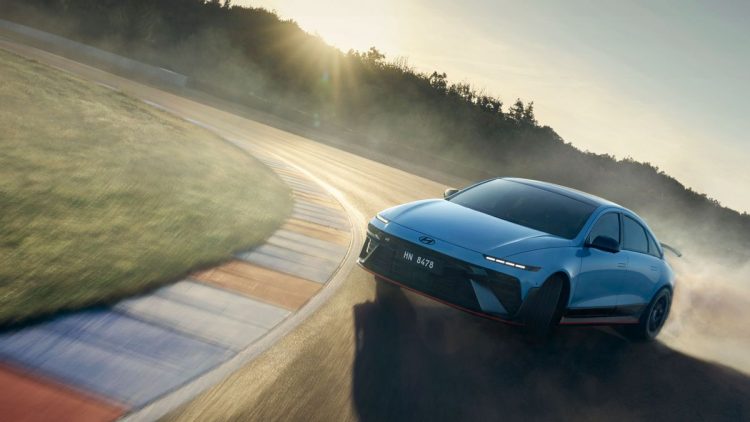The electric vehicle (EV) revolution is transforming the automotive industry at an unprecedented rate, with more consumers making the switch to cleaner, greener transportation. As governments introduce stricter environmental regulations and consumers demand more sustainable options, the demand for EVs is expected to skyrocket in the coming years. But who will truly benefit from this surge in demand—emerging startups or the legacy giants that have dominated the automotive sector for decades?
This question is at the heart of a rapidly evolving automotive landscape. On one hand, we have the new entrants—bold, tech-driven startups that are aiming to redefine the rules of the game, often bringing fresh ideas and innovative business models. On the other hand, we have traditional automakers, many of whom have significant brand recognition, established supply chains, and substantial capital. However, their challenge lies in adapting their traditional production and business models to meet the demands of a new electric future.
As EV demand surges, the question is whether this will accelerate the rise of new brands that are well-suited for an electric-first future, or if traditional giants can leverage their resources and expertise to maintain their dominance. In this article, we’ll explore the factors that will determine whether emerging brands will be able to outpace legacy companies or if legacy automakers will adapt and reclaim their position as the market leaders.
The Rise of Emerging EV Brands: Disruption and Innovation
1. New Business Models and Agile Execution
Emerging electric vehicle brands like Tesla, Rivian, and Lucid Motors have been able to disrupt the automotive market thanks to their agile business models. Unlike traditional manufacturers, which are often bound by legacy systems, infrastructure, and established production processes, new players in the EV market are free to create leaner, more nimble operations.
- Direct-to-consumer sales: Unlike traditional automakers who rely on dealership networks, new EV startups tend to sell directly to consumers, allowing for a more streamlined sales process, lower prices, and stronger customer relationships. Tesla, for example, has shown that a direct-to-consumer model can build a loyal customer base and dramatically reduce overhead costs.
- Technology-first approach: Many emerging EV brands place a significant focus on technology, with software and autonomous driving features integrated into their vehicles from the outset. This gives them an advantage in terms of creating seamless user experiences and future-proofing their products. New players in the EV market also tend to prioritize the integration of advanced software systems, including over-the-air (OTA) updates and AI-driven enhancements.
2. Fast-Tracking Production: The EV Startup Advantage
Emerging EV companies can often make bold decisions that help them scale production faster, while legacy automakers are still trying to adapt their traditional manufacturing systems.
- Simplified vehicle design: Startups like Lucid Motors and Rivian are able to design vehicles with fewer components and in a more modular fashion, which allows for more streamlined production compared to the highly complex internal combustion engine vehicles that traditional manufacturers have historically produced.
- Gigafactory investments: Many new EV brands are also building their own gigafactories (like Tesla’s Gigafactory in Nevada) or are forming partnerships with battery manufacturers to gain more control over their supply chains. These new facilities allow them to cut costs, increase production speed, and build battery technology that is optimized for the needs of their vehicles, giving them a competitive edge.
3. Funding and Investment: Leveraging Financial Backing
Another key advantage of emerging EV brands is the ability to secure venture capital or private equity funding to scale their operations quickly. The hype around EVs and the increasing demand for sustainable technologies have made these startups attractive to investors looking to capitalize on the shift toward electric mobility.
- IPO and SPACs: Companies like Rivian and Lucid Motors have gone public through Initial Public Offerings (IPOs) or Special Purpose Acquisition Companies (SPACs), enabling them to raise billions of dollars in capital. These funds allow them to accelerate production, build infrastructure, and expand their market share without being bogged down by the traditional financial constraints faced by legacy manufacturers.
4. Consumer Preferences and Brand Loyalty
While emerging brands benefit from being able to take advantage of fresh trends, they also have the potential to shape the future of consumer preferences. Many consumers, especially younger buyers, are increasingly drawn to brands that emphasize sustainability, cutting-edge technology, and modern design. This is an area where new EV brands, which often focus on appealing to a tech-savvy, eco-conscious demographic, are positioning themselves strongly.
- Strong branding: Emerging EV brands are often seen as being more aligned with modern, forward-thinking values. Tesla, in particular, has cultivated an almost cult-like following based on its founder Elon Musk’s charisma and the company’s futuristic products. Consumers who buy into Tesla’s mission of sustainable energy and disrupting traditional industries are often more brand-loyal than customers of legacy automakers.
Challenges for Traditional Automakers: Adapting to the Electric Future
While the rise of new EV brands is exciting, traditional automakers are not sitting idly by. Many of the world’s largest automotive companies, such as Volkswagen, General Motors, Ford, and Toyota, have massive resources, long-established infrastructure, and expertise in vehicle manufacturing. The real question is: can these legacy giants pivot quickly enough to meet the demands of the electric vehicle market?
1. The Need for Rapid Transformation
One of the biggest challenges faced by traditional automakers is their inertia in transitioning from ICE vehicles to electric ones. The legacy production lines, which were optimized for manufacturing gasoline-powered cars, are often ill-suited for the mass production of electric vehicles. Shifting to electric requires significant investment in new manufacturing facilities, supply chains, and research and development.
- Reinventing production lines: As Volkswagen has done with its MEB platform or Ford with its Mustang Mach-E, legacy automakers are making moves to build dedicated EV production lines. However, the transition is expensive and time-consuming, requiring a complete rethink of existing processes.
- Legacy cost structures: Traditional automakers are also burdened by their legacy cost structures, which include large workforces, long-established supplier relationships, and complex distribution networks. Shifting to EV production often means retraining workers, changing supply chain partners, and reducing reliance on traditional parts like engines, transmissions, and exhaust systems.
2. Digitalization and Software Challenges
As electric vehicles become more reliant on software and connected features, traditional automakers face the challenge of digitalization. Unlike their traditional mechanical expertise, building advanced software systems for EVs requires a different kind of talent pool, new engineering approaches, and integration of artificial intelligence.
- Software-driven business models: Companies like Tesla have demonstrated that software plays a central role in the future of EVs—be it through autonomous driving, vehicle diagnostics, or over-the-air updates. For legacy brands, transitioning to this software-centric model is a complex challenge, as they are primarily geared toward hardware manufacturing.
- Hiring new talent: Automakers must also recruit a new generation of engineers skilled in software development, data analytics, and AI systems. The shortage of tech talent, coupled with the highly competitive job market, is another barrier traditional brands must overcome.

3. Scale and Efficiency: Playing Catch-Up
Although traditional automakers have deep pockets, they also have to contend with legacy infrastructure and cultural resistance to change. Scale is an area where they may still have an edge, but this advantage is diminishing.
- Tesla’s dominance: Tesla, for instance, has achieved scale and efficiency in its manufacturing processes faster than most traditional carmakers. While companies like Volkswagen are investing billions into electric mobility, Tesla’s established EV production system puts it in a unique position to continue expanding rapidly.
- Economies of scale: Traditional automakers are just starting to catch up in terms of cost efficiency and production volume. While they have the capital and scale to compete, it may take years before they achieve the same level of operational efficiency as the nimble new players.
4. Brand Loyalty and Consumer Perception
One of the most significant advantages that legacy automakers have is their brand recognition. Volkswagen, Toyota, Ford, and BMW have decades of brand equity that their new competitors cannot easily replicate.
- Established networks and trust: These brands have a trustworthy relationship with their customers built over many years. Their long history of providing quality vehicles will be an important asset as they transition to electric mobility. However, they must also focus on reassuring consumers that they are capable of building competitive EVs that match the innovation and performance offered by Tesla and other new entrants.
5. Government Regulations and Incentives
Traditional manufacturers also have the advantage of being better equipped to navigate government regulations and incentives. With stricter emission standards and carbon reduction goals becoming more common worldwide, large automakers are often better positioned to take advantage of government incentives for EV production and green technologies.
Conclusion: Who Will Lead the EV Revolution?
As the demand for electric vehicles continues to rise, the question of who will ultimately benefit from this transformation remains complex. Emerging startups are certainly well-positioned to capitalize on the growing demand for clean mobility thanks to their agility, innovative technologies, and fresh business models. However, traditional automakers have significant advantages in terms of brand loyalty, capital, and global supply chains.
Ultimately, the success of new brands versus legacy giants will depend on each company’s ability to adapt quickly, innovate boldly, and create compelling products that meet the evolving needs of consumers. The EV revolution is not just about electric cars; it’s about reshaping how we think about transportation, sustainability, and technology. Both newcomers and established players have a vital role to play, and only those who can successfully navigate these changes will emerge as the leaders of tomorrow’s automotive world.











































